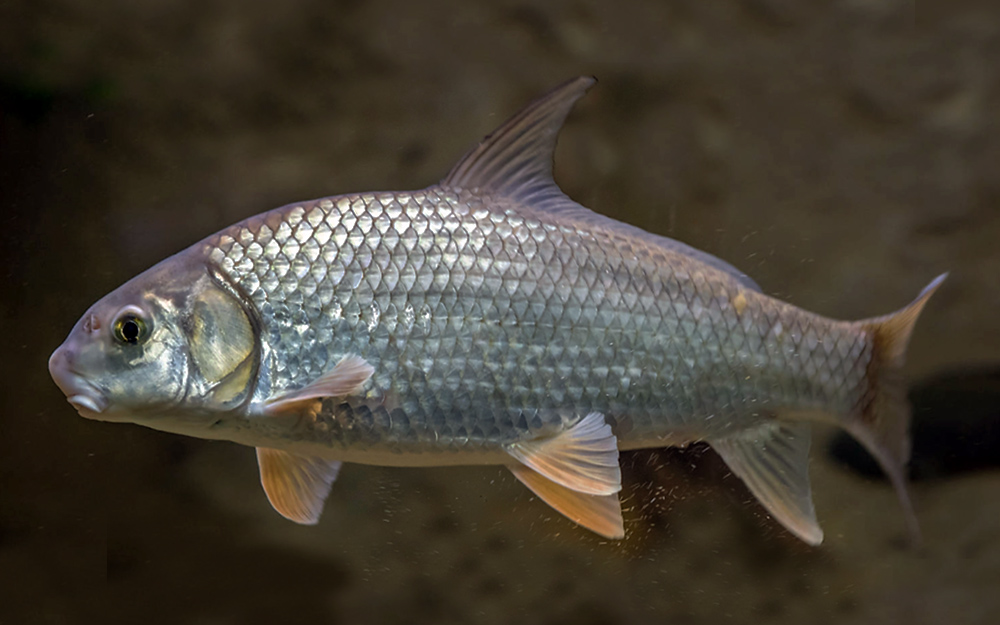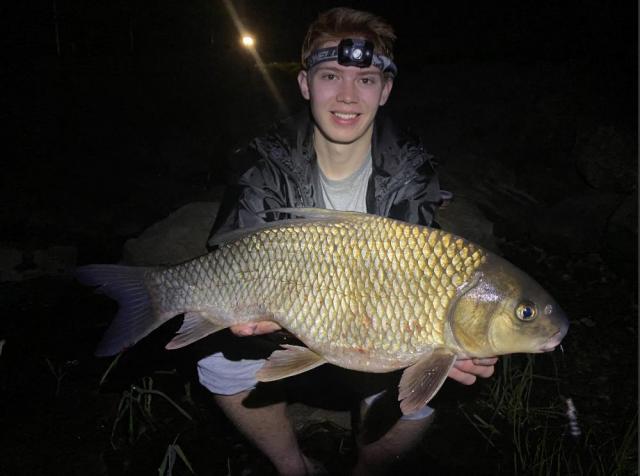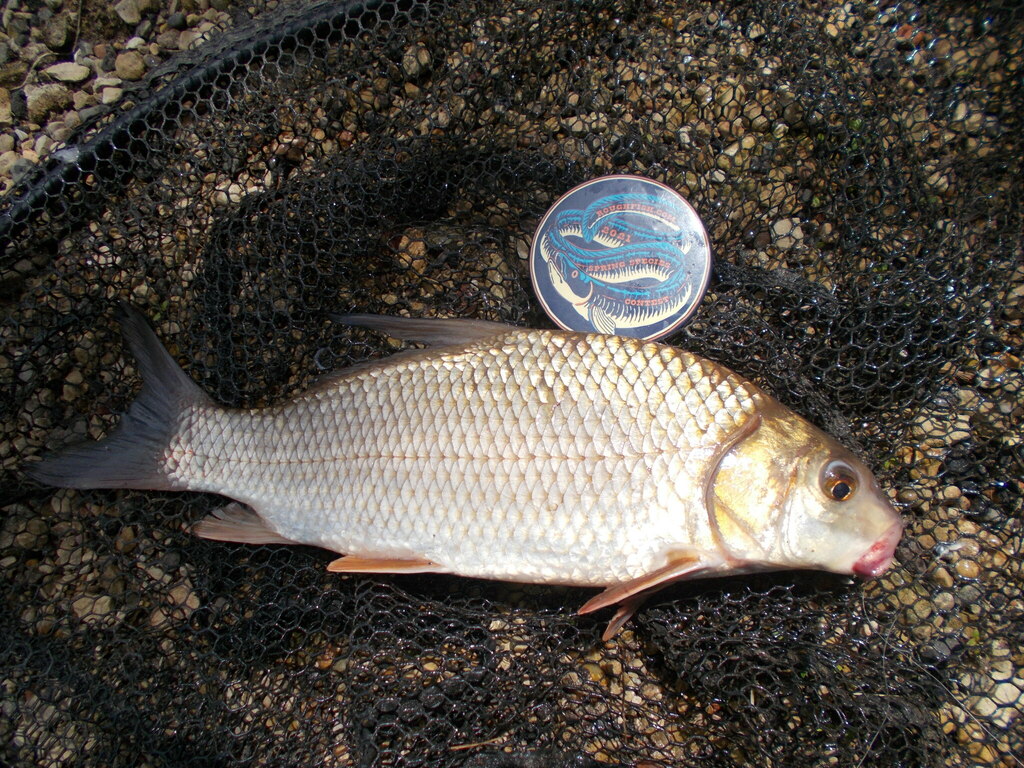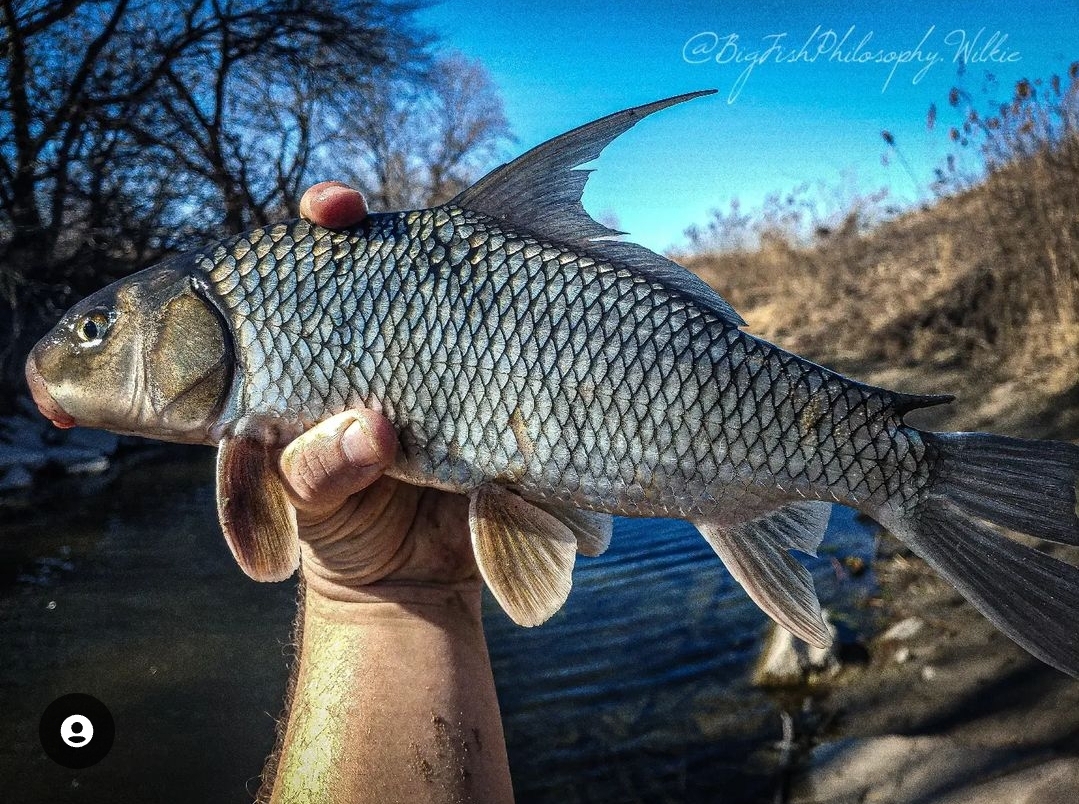Quillback
(Carpiodes cyprinus)

Classification
General data
The quillback (Carpiodes cyprinus), also known as the quillback carpsucker, is a type of freshwater fish of the sucker family widely distributed throughout North America. It is deeper-bodied than most suckers, leading to a carplike appearance. However, the quillback is not a carp. It can be distinguished from carp by the lack of barbels around the mouth. The quillback is long-lived, with age up to 30 years, 44 years, and 52 years documented across different studies.
Physical description
The quillback is a medium-sized, deep-bodied fish found throughout North America. It has a small head, humped back and deeply forked caudal fin. The compressed body of the quillback makes it look flattened when viewed from the side. The quillback has a subterminal mouth with no barbels, and no nipple-like protrusions on the bottom lip.
It has large, reflective, silver cycloid scales that are responsible for giving the quillback its characteristic silver color. They have a white belly with yellow or orange lower fins. The tail and dorsal fin are usually gray or silver. The quillback gets its name from the long quill that is formed via the first several fin rays of the dorsal fin.
Quillback are typically 15–20 inches on average, weighing between 1 and 4 pounds. However, they can grow up to 26 inches and weigh 10 pounds.
The quillback has a nearly straight, hyper-sensitive lateral line, composed of at least 37 lateral line scales. This helps the fish locate predators and prey.
Distribution
The quillback is found throughout much of North America, from Saskatchewan to Florida, and from South Dakota to Alabama. The quillback occupies temperate, freshwater habitats. This includes many streams, lakes, channels and rivers. They prefer water that is clear, slow moving, highly productive and moderately deep. The quillback can commonly be found in the Hudson Bay, the Mississippi River basin, the Great Lakes, and drainages from the Delaware, Apalachicola, and Pearl river. They often comprise a large portion of the biomass of warmwater rivers, but they are very difficult to catch with traditional American angling methods.
The quillback carpsucker is closely related to the highfin carpsucker and the river carpsucker. All three species are rarely caught by anglers due to their feeding habits.
Quillbacks usually feed in schools. They are omnivores and bottom feeders that prefer lakes, rivers and streams in which the water is clear at the bottom. The school of quillbacks move slowly over a sand or gravel bottom when they eat. Their typical diet consists of insect larvae, crustaceans, molluscs, protozoa and various aquatic vegetation, including algae and leaves.














